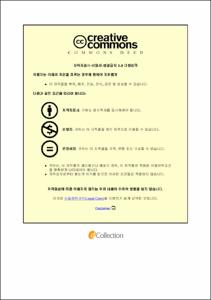제주산 감귤 및 레몬 잎 유래 에센셜오일과 아임계수 추출물의 성분 및 효능 연구
- Alternative Title
- Evaluation of Bioactivities and Chemical Constituents on Essential oils and Subcritical Water Extracts from Citrus Unshiu and Citrus limon Leaves in Jeju
- Abstract
- This study was conducted to identify the chemical components and to evaluate the bioactivities for the leaves extracts of two Citrus species such as Citrus unshiu (CU) and Citrus limon (CL) cultivated in Jeju. While much research has been done on the fruits of CU and CL, little has been focused on the leaves which are actually treated as a waste.
The essential oils were obtained by hydrodistillation method. Three types of CU and CL leaves extracts were prepared with cold water (room temperature, 2 h), hot water (100℃, 2 h), and by using subcritical water extracter (15min, 100/ 145/ 190℃ and 70/ 90 bar).
Constituents of the essential oils were analyzed by gas chromatography-mass spectrometry (GC-MS). The magor constituents of CUL (Citrus unshiu leaves) EO were identified to be γ-terpinene, p-cymene, β-elemene. On the other hand, CLL (Citrus limon leaves) EO showed limonene, β-pinene and α-citral as the major components. The subcritical water extract (SWE) were analyzed by high performance liquid chromatography (HPLC). SWE of CUL showed neohesperidin, naringin and naringenin as the main components. And SWE of CLL indicated the presence of neohesperidin and small amound of naringin.
For the anti-oxidative studies by DPPH and ABTS+ radicals, potent radical scavenging activities were observed in each EOs and extracts. It is interesting to observe that the SWE of the CU and CL leaves were the much higher antioxidant activity than those of the other extracts. Antimicrobial activity of essential oils of CU and CL leaves were tested against Cutibacterium acnes, which identified their activities by observing the the clear zone in the paper disc method.
On the screening of skin-whitening activities, the EOs and SWEs inhibited the cellular melanogenesis and tyrosinase activities dose-dependently in α-MSH stimulated B16F10 cells.
For the anti-inflammatory activity in RAW 263.7 cell, SWEs of CU and CL leaves as well as EOs inhibited NO production in a dose-dependent manner.
Base on the results obtained in this study, it is suggested that SWEs and EOs of CU and CL leaves has a potential for using as cosmetic materials related to the skin-related activities such as antioxidant and anti-imflammatory effects.
- Issued Date
- 2023
- Awarded Date
- 2023-02
- Type
- Dissertation
- Alternative Author(s)
- Kim, Min jeong
- Affiliation
- 제주대학교 대학원
- Department
- 대학원 화학과
- Advisor
- 이남호
- Table Of Contents
- I. 서론 1
II. 재료 및 실험 방법 8
1. 재료 8
2. 감귤 레몬 잎 에센셜오일 및 아임계수 추출 9
2.1. 시료 채취 9
2.2. 시료 추출 9
2.2.1. 에센셜오일 추출 9
2.2.2. 아임계수 추출 10
2.2.3. 열수 및 저온 추출 11
3. 성분 분석 12
3.1. GC-MS 성분 분석 12
3.2. HPLC 성분 함량 분석 13
4. 생리 활성 평가 15
4.1. 항산화 15
4.1.1. 총 폴리페놀 함량 15
4.1.2. DPPH radical 소거 활성 16
4.1.3. ABTS+ radical 소거 활성 17
4.1.4. SOD 유사 활성 17
4.2. 항염 18
4.2.1. RAW264.7 세포 배양 18
4.2.2. 세포 독성 평가 (WST-1) 18
4.2.3. Nitric oxide (NO) 생성 억제 활성 19
4.3. 미백 19
4.3.1. B16F10 melanoma 세포 배양 19
4.3.2. 멜라닌 합성 저해 활성 20
4.3.3. 세포 독성 평가 (WST-1) 20
4.4. 항균 20
4.4.1. 균주 배양 20
4.4.2. Paper disc diffusion method 21
5. 통계처리 22
III. 실험 결과 23
1. 성분 분석 23
1.1. 감귤 레몬 잎 에센셜오일 GC-MS 성분 분석 23
1.2. 감귤 레몬 잎 아임계수 HPLC 성분 함량 분석 26
2. 생리 활성 실험 결과 29
2.1. 항산화 29
2.1.1. 총 폴리페놀 함량 29
2.1.2. DPPH radical 소거 활성 30
2.1.3. ABTS+ radical 소거 활성 34
2.1.4. SOD 유사 활성 36
2.2. 항염 37
2.2.1. Nitric oxide (NO) 생성 억제 활성 및 세포 독성 37
2.3. 미백 41
2.3.1. 멜라닌 합성 저해 효과 및 세포 독성 41
2.4. 항균 43
2.4.1. Paper disc diffusion method 43
IV. 요약 및 결론 45
V. 참고 문헌 47
- Degree
- Master
- Publisher
- 제주대학교 대학원
- Citation
- 김민정. (2023). 제주산 감귤 및 레몬 잎 유래 에센셜오일과 아임계수 추출물의 성분 및 효능 연구.
- Appears in Collections:
- General Graduate School > Chemistry
- 파일 목록
-
-
Download
 제주산 감귤 및 레몬 잎 유래 에센셜오일과 아임계수 추출물의 성분 및 효능 연구.pdf
기타 데이터 / 1.72 MB / Adobe PDF
제주산 감귤 및 레몬 잎 유래 에센셜오일과 아임계수 추출물의 성분 및 효능 연구.pdf
기타 데이터 / 1.72 MB / Adobe PDF
-
Items in Repository are protected by copyright, with all rights reserved, unless otherwise indicated.